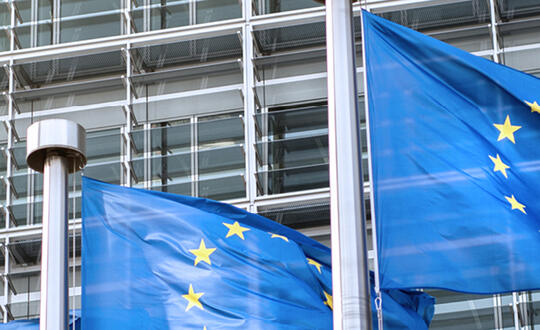
The UK Prime Minister, Theresa May, emerged from a five hour meeting on 14 November to announce that she had secured "collective decision" by the Cabinet to support the draft EU Withdrawal Agreement. It was immediately clear the "collective decision" was by no means unanimous, and the morning of 15 November saw several resignations, including that of Brexit Secretary Dominic Raab. Announcing the Cabinet decision, the Prime Minister surprisingly identified three possible outcomes:
- Approval of the deal at Westminster and by the EU27
- A "no deal" exit on 29 March 2019; or
- No Brexit.
The third possibility is particularly striking, given the UK government's consistent position that the notice it gave under Article 50 of the Lisbon Treaty is irrevocable without the consent of the EU27. That position is due to be tested by the European Court of Justice (ECJ) on 27 November in a crowdfunded case launched by the Good Law Project.
Facing the House of Commons on 15 November the Prime Minister was repeatedly asked to explain how a "no Brexit" outcome might occur. Her response was merely to say that she had identified the outcome as a "risk" should the draft deal be rejected.
This leaves businesses in a difficult position. It is far from certain that the draft deal will be accepted. It is also unclear how a "No Brexit" outcome could be attained. Consequently, it remains a prudent necessity for business to plan for a "no deal" outcome on 29 March 2019.
What does Article 50 say?
Article 50 is silent on the possibility of retracting a notice once given. Its author, Lord Kerr, has repeatedly stated that the Article 50 notice is merely a notice of intention, and that "intentions can change". In his view, unilateral withdrawal remains permissible.
Lord Kerr's view might be persuasive, but it is by no means conclusive. In March 2018 the European Parliament commissioned a study examining the legal arguments either way, ranging from principles of international law to a close textual analysis of Article 50. The arguments are finely balanced, and the report concluded that the question could only be resolved by a ruling of the ECJ. The action brought by the Good Law Project is therefore a crucial element in the next stages of the Brexit debate. If the ECJ were to conclude that unilateral withdrawal is possible, then that would potentially ease the path for a further referendum or "Peoples' Vote" including an option to remain within the UK.
It is, however, clear in any event that the Article 50 process could be suspended or terminated by mutual agreement at any time before 29 March 2019. Once the Article 50 notice has expired on 29 March 2019, the only route back into the EU would seem to be an application for membership made under Article 49 of the Lisbon Treaty. Consequently, the window of opportunity for a "Peoples' Vote" would seem to be in January to mid-March 2019.
The experience of 2016 strongly underlines the point that referendum results cannot be predicted with confidence. Consequently, it is entirely possible that a "Peoples' Vote" might restate the electorate's desire to leave the European Union in what, by then, would be more of less of necessity a "no deal" Brexit. That outcome would leave businesses with little or no time for contingency planning.
Deal or no deal?
The UK government's primary position remains that rejection of the draft deal would result in a "no deal" exit from the EU on 29 March 2019. From a business perspective, that would inevitably involve disruption as it would mean that there would be no transitional period. The UK would immediately become a "third country" for purposes ranging from customs and border control to regulatory standards and personal data protection. A September 2018 exercise conducted by the Port of Rotterdam indicated that the likely consequences would include severe delays in supply chains connecting the UK and the EU27. That study is in line with similar projections for UK ports such as Dover.
The draft EU Withdrawal agreement is due to be discussed at an emergency summit on 25 November 2018. If finalised, then the agreement would be put to a "meaningful vote" in the UK Parliament in early December. If the draft agreement were to be rejected, then the question would resolve into a binary choice between a "no deal" Brexit and a People's Vote which could itself lead to a "no deal" Brexit.
Hope for the best: prepare for the worst
On any currently credible scenario, a "no deal" Brexit remains possible. That risk might recede, but could not be discounted unless and until the EU Withdrawal Deal has been finalised, and has cleared not only the UK Parliament but also the EU27 ratification procedures. At the earliest, that would be in December 2018, with possible delays into January 2019.
For that reason, our advice is to press on with contingency planning to ensure resilience in supply chains, contractual relationships, regulatory, customs and border clearance procedures.
This article is for general information only and reflects the position at the date of publication. It does not constitute legal advice.



